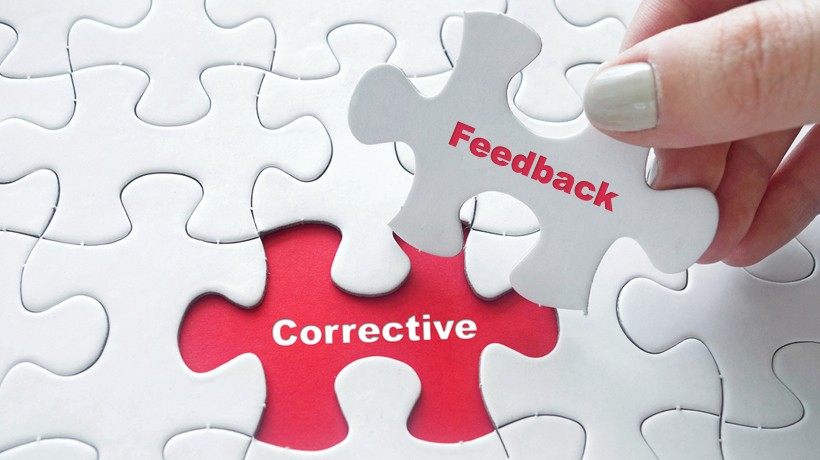Importance Of Corrective Feedback
Before we delve into the “how”, let’s pause and think about “why” corrective feedback is important. Adult learners participate in eLearning courses to obtain new knowledge and skills. However, the following questions often come to mind:
- What if the learners weren’t able to fully grasp the course content?
- What if their approach to taking the course wasn’t conducive to distance learning?
- What if there was a lack of understanding of the initial content, which they then carried through the entire course, thereby defeating the objectives of the course?
With a formal corrective feedback mechanism in place, all of these issues would be addressed appropriately, ensuring that the learner can then take remedial action to fully benefit from the instruction.
However, corrective feedback isn’t just a one-way street:
- How will course designers know what they are lacking in course delivery?
- What alternative (other than filling out an end-of-course survey) do learners have if they need additional assistance with the content of the course?
- How can the training be improved if there is no feedback from learners about the challenge areas of the course?
Corrective feedback is therefore essential for both the Instructional Designers and learners.
3 Approaches To Corrective Feedback
Some of the approaches that are generally recommended as part of a formal corrective feedback process include:
- The “feedback sandwich” approach.
Where feedback providers start with positive comments about the participants’ performance, sandwich negative feedback, and then, close with positive comments at the end. - The “chronological feedback” approach.
Where instructors enumerate their good and bad observations in chronological order, enabling learners to get a sequential picture of how they fared throughout the course. - The “clinical education” approach.
This is more of a learner-centered method for delivering corrective feedback that uses a conversational technique to produce goals and action plans as a result of the feedback provided.
Depending on the type of course, the complexity of content, and the level of maturity of the audience, eLearning course designers may opt for one, or a combination, of these corrective feedback approaches.
Best Practices For Providing Corrective Feedback
Proponents and opponents of each of these corrective feedback approaches abound, and each of these methods has its pros and cons. It is recommended to keep the following best practices in mind:
- Corrective feedback should not wait until the end of the course. Instead, it must be provided regularly to be effective.
- Feedback should not focus solely on the “corrective” aspect. It should be balanced, also highlighting what went well.
- Before starting a feedback session, ensure that you understand exactly what you want to achieve from the session.
- If this is purely an online feedback session, offer opportunities for the learners (via free-text form fields, drop-down lists, and check-box responses) to provide their own assessment of the course, even if that includes criticism of the content or design.
- Rather than highlighting the negatives (“You did not respond fully to….”), try to suggest how things could be improved (“Next time, try to elaborate…” or “Perhaps you could have done…”).
- Always conclude with a positive reinforcement.
Regardless of how the feedback session progresses, it should never be concluded without a formal plan of action for remedial steps required to be undertaken by the learner.
Closing Thoughts
Each learner reacts differently to corrective feedback: Some may take it as a slight on their abilities; others receive it positively. Therefore, it is essential to avoid making the feedback “personal”, and always offer alternatives. Be specific about what needs to be changed. Avoid criticism without having specific examples of what is wrong, and always summarize corrective action needed, preferably with a timeline for improvement.
While templates and online forms are great corrective tools for quantitative feedback, text-based feedback (emails, brief reports, text messages, tweets) works well for more descriptive corrective recommendations.
If you want to learn more about assessments, evaluations, corrective feedback or just want to know more about Instructional Design, please check out the Instructional Design for ELearning: Essential guide to creating successful eLearning courses book. This book is also available in Spanish. In addition, you may be interested in the Instructional Design for eLearning course.
